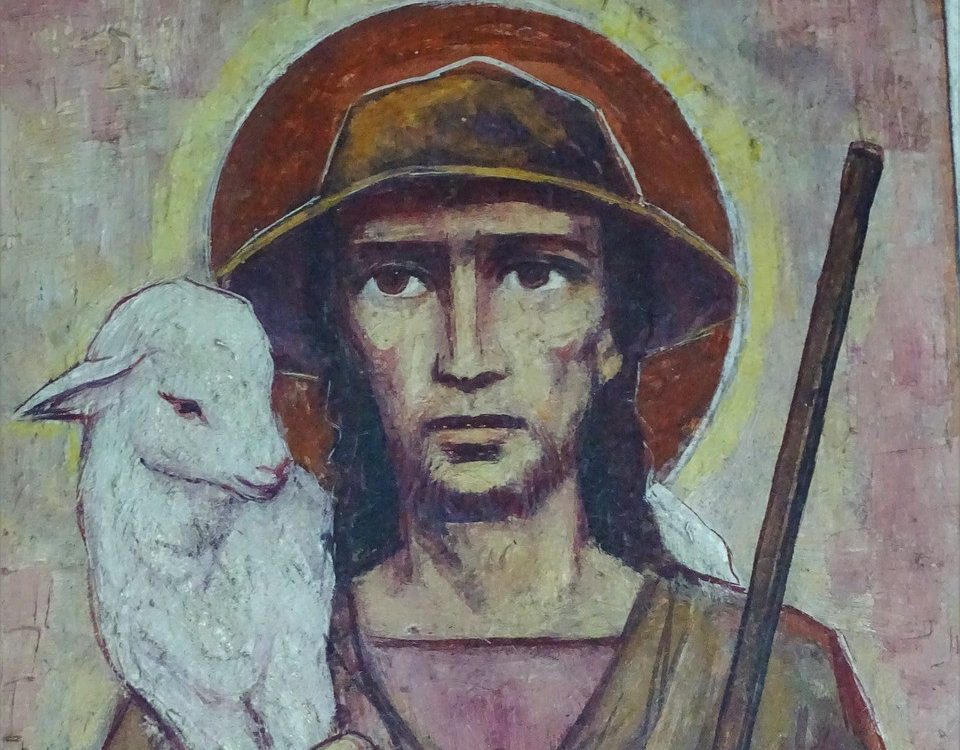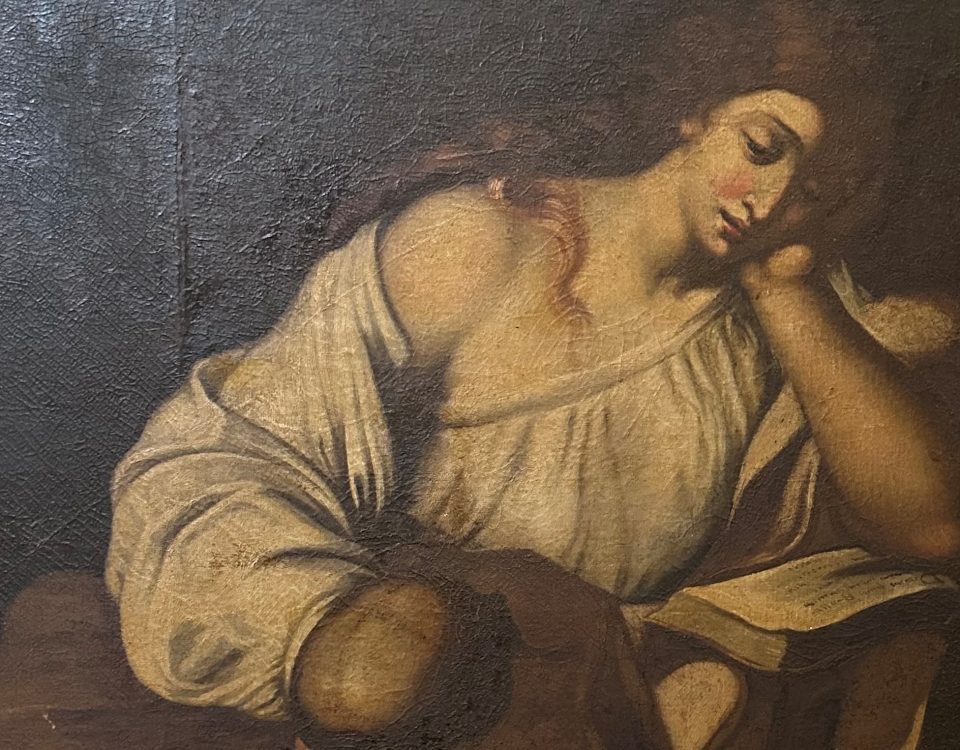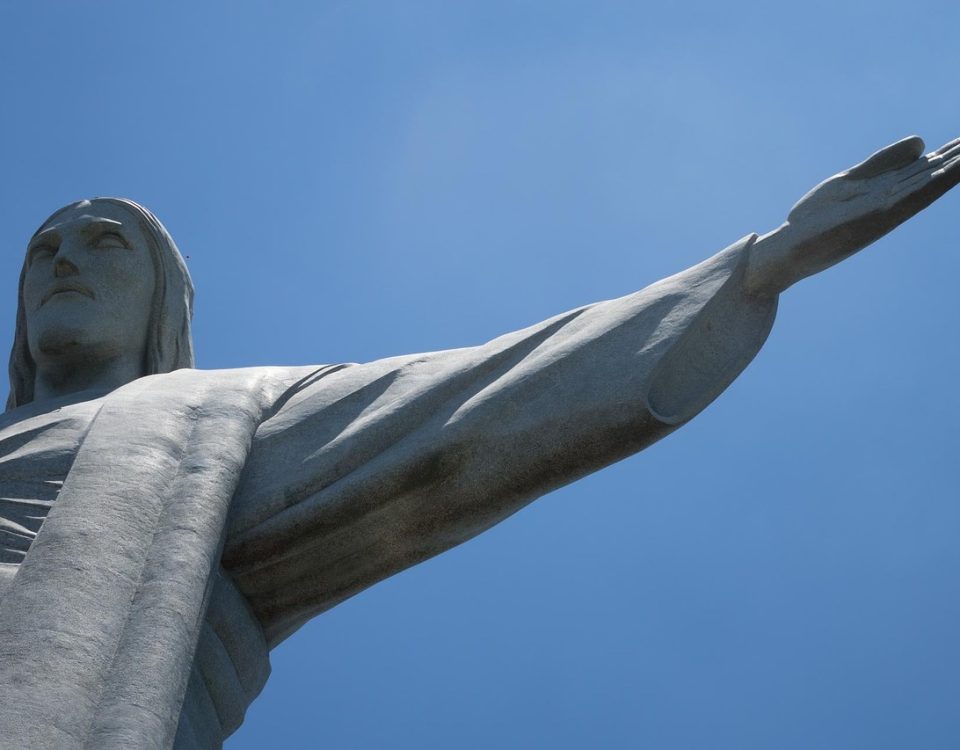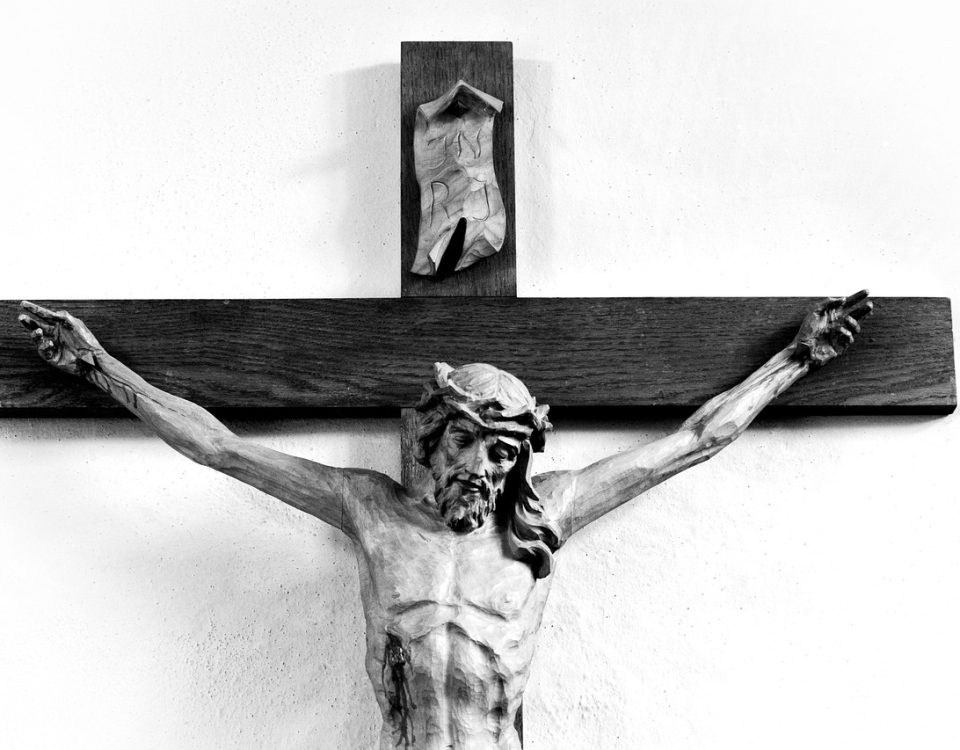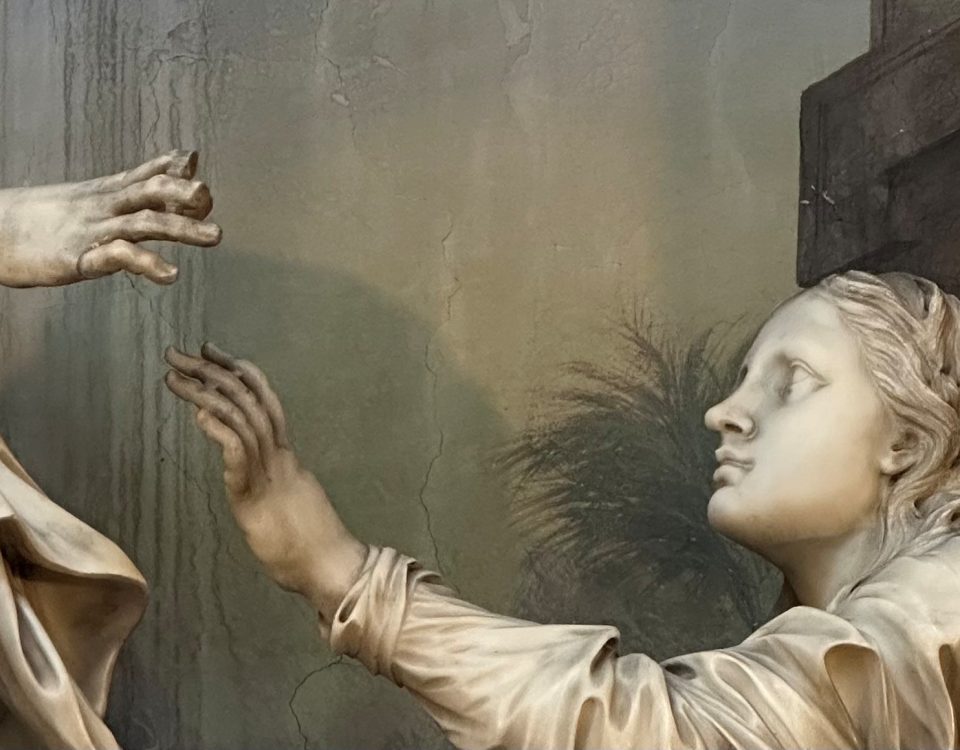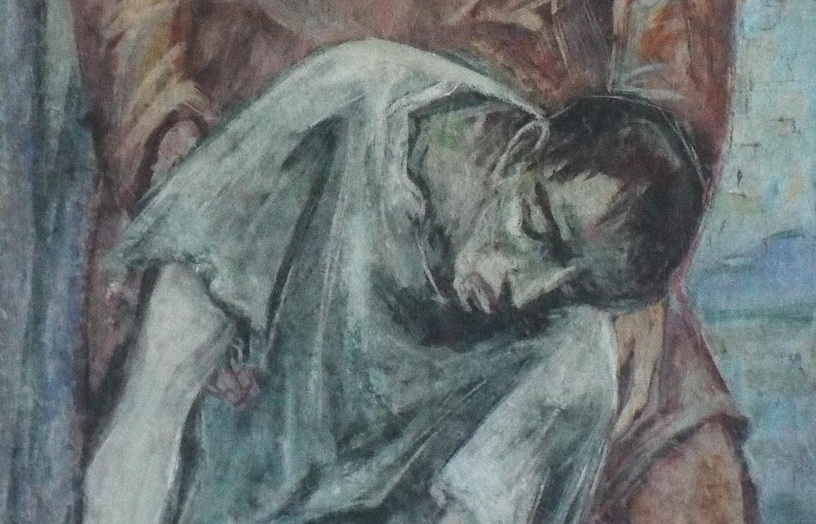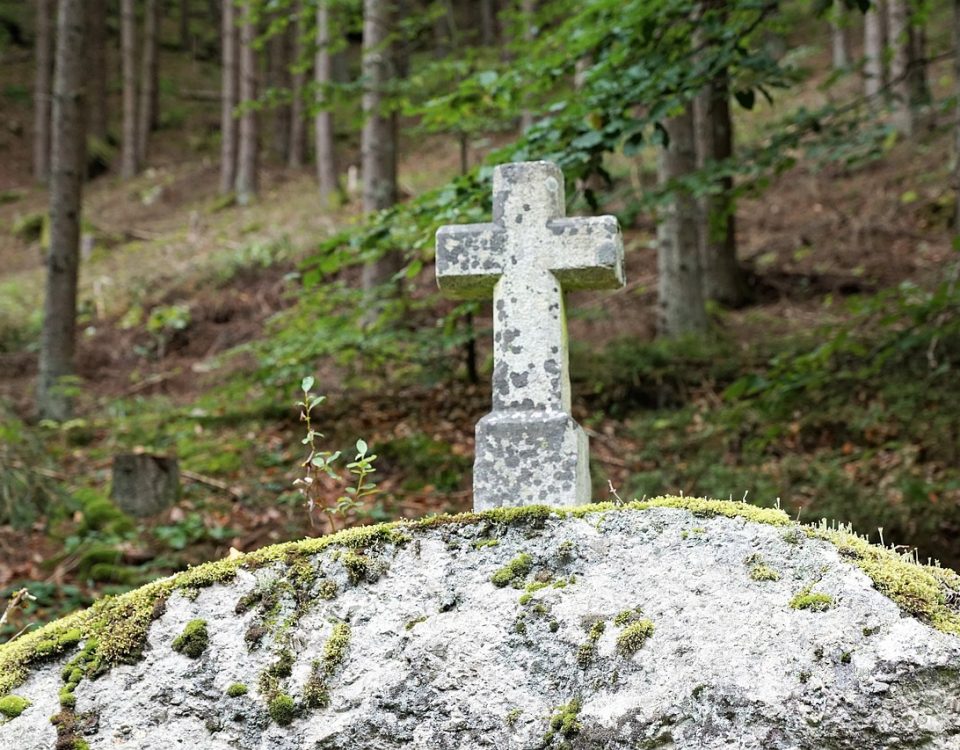There is a famous story told of Saint Seraphim of Sarov, a Russian monk from the eighteenth century—a “wonderworker,” he’s called.
He was walking with his disciple in the forest on a winter’s day when his rather earnest student asked him, “I don’t understand how one can be certain of being in the Spirit of God. How should I be able to recognize for certain this manifestation [of the Spirit] in myself?” Gently, the holy old Seraphim said to him, “I’ve already told you…it’s simple…What more is necessary, my friend?” “I must understand better,” the young monk replied, “everything that you have said to me.” “My friend,” Seraphim answered, still gently, “we are both at this moment in the Spirit of God…Why won’t you look at me?” “I can’t look at you, Father,” the young monk replied, “your eyes shine like lightening; your face has become more dazzling than the sun, and it hurts my eyes to look at you.” “Do not be afraid,” the wonderworker said, “at this very moment you’ve become as bright as I have.”[1]
Illumined, physically as well as spiritually. It happens on occasion, more in the East than in the West. The stylites of ancient Christian Syria, those radical monks that lived their lives atop great stone columns (Saint Symeon being the most famous of course): these men, some of them, were said to shine like beacons in the night, their faces so radiant pilgrims could barely look at them.[2] And, of course, this phenomenon is biblical. Down from Sinai, the sacred tablets of the covenant in hand, Moses didn’t realize that his face had become “radiant” from having spoken to the Lord. Aaron and the others were afraid to come near him, and he had to “put a veil over his face.”[3]
We don’t think about it much these days, but our ancestors did. For them, this divine light, lighted upon the flesh, was the deepest of mysteries. What was this light? It was no small controversy, late in the middle ages—again in the East—which finally brought some theological word to this wordless mystery.[4] “Uncreated light” the holy theologians called it—intellectual as well as sensual, yet immaterial. It was divinity rendered visible, but only for a moment. It was, to use the ancient phrase, “the mystery of the eighth day.”[5] That is, this uncreated light, shone in the face of Moses, in the faces of saints, and of course, in the face of Jesus was a sort of mystical unveiling of God himself, an unveiling of truth and of a timeless reality more real than reality itself.
So, in one sense the transfiguration of Jesus on Mount Tabor is traditional albeit mystical. But here, there’s more. “This is my beloved Son,” the heavenly voice cries out.[6] The decree is prophetic and messianic. Here is the servant foretold by Isaiah. This is the royal Son promised to David; the perfection of Elijah and the successor of Moses. But, of course, it’s only in the broader context of the Gospels that we can begin to understand the greater meaning of this mystery (Peter and the others didn’t understand what they were seeing when they saw it—only afterwards, after the Passion.). The transfiguration of Jesus, his divine radiance made manifest on the holy mountain, serves as a sort of preface to the full revelation of God’s love on the cross. That is, this Jesus of Nazareth, now ablaze with divine light, is the same Jesus who had said just a week earlier that he “must go to Jerusalem…suffer greatly…and be killed.”[7] In fact, he’ll say it again soon after this sacred show of light.[8] And this, his suffering and death—so Jesus will say—is just as much the revelation of God as is this momentary unveiling of eternal radiance. In John’s gospel, Jesus is clear: “When you lift up the Son of Man,” he said, “then you will realize that I AM.”[9] The divine name, first given to Moses in the desert, barely spoken for the holiness of it, the disclosure of God’s essence and identity: this, Jesus says, is what his death on the cross reveals, and perfectly.[10] And, of course, this is so because his death shows his love.
And so, by the light of this mystery, this transfiguration, we begin to see the wisdom, or rather the secret, of the paradox of Christ’s suffering and death. We begin to see why the night before he died Jesus prayed boldly against the darkness to his Father, “Give glory to your son.”[11] We begin to see why, even while his enemies were plotting his arrest, Jesus celebrates the Passover with his disciples—why he said, literally just a few short hours before his capture, “take courage, I have conquered the world.”[12]
But what does this mean for us today? What is the light of God today? Where is this light? What in this world can you see by the brightness of it? This light still exists. It has since before the beginning; and it can—if you’ll allow it—help you see, like an unveiling vision of the grandeur of the love of God, a love for you, and even love for your enemy. This light lighted upon us now by faith can—again, if we allow it—give us that vision of the world and of each other that makes everything, in a word, beautiful. This light can help you see, like I think Wendell Berry sees in one of his poems where we says, “There are no unsacred places;/ there are only sacred places/ and desecrated places.”[13] But it takes faith; faith is what gives light. The ancient fathers of the East taught that the soul “possesses two eyes,” one to see the “secrets of nature,” and the other to behold the “glory” of God.[14] This light, shone in Jesus and in those with faith, can help you see like these mystics and poets—if you allow it. Saint Seraphim, that Russian wonderworker: he called it “unspeakable joy.”[15]
And the gift of this light, of course, is this: a capacity to see through your own brokenness and sin, a capacity to see through the wickedness of this wicked world. The gift of this light, to quote a great Orthodox theologian, David Bentley Hart, is to be “able to look upon this world with the eye of charity—” to see “that there is in all the things of the earth a hidden glory waiting to be revealed, more radiant than a million suns, more beautiful than the most generous imagination or most ardent desire can now conceive…a glory not entirely hidden: veiled, rather, but shining in and through and upon all things.”[16] Now, bathing in this light, we can see the loving presence of God even in pain and suffering. The Church teaches that by faith and through the sacraments, suffering is not done away with, but that it “acquires a new meaning.”[17] Because of this light, like Jesus, we too can pray for glory in the darkness. We too can say, “take courage” as we stand before the crosses of our lives.
This is the gift: Jesus said to his disciples, “do not be afraid.”[18] The light was apparently gone, but Jesus remained. He wanted them to follow him to Jerusalem. And so, he wants us to be fearless and to follow and to take up our cross, so that we might rise with him in glory. The Church’s invitation today is profound. I hope you see it for what it is. I hope we see it together—this light and this love of God. Amen.
[1] Vladimir Lossky, The Mystical Theology of the Eastern Church, 228
[2] William Dalrymple, From the Holy Mountain, 60
[3] Exodus 34:29-35
[4] Lossky, 77
[5] Ibid., 220-221
[6] Matthew 17:5
[7] Matthew 16:21
[8] Matthew 17:22-23
[9] John 8:28
[10] Cf. Catechism of the Catholic Church 203
[11] John 17:1
[12] John 16:33
[13] Wendell Berry, “How to Be a Poet” (2005)
[14] Gregory Palamas, The Triads D. In Theological Aesthetics: A Reader, 96
[15] Lossky, 229
[16] David Bentley Hart, The Doors of the Sea, 103
[17] Catechism of the Catholic Church 1521
[18] Matthew 17:7
© 2023 Rev. Joshua J. Whitfield

